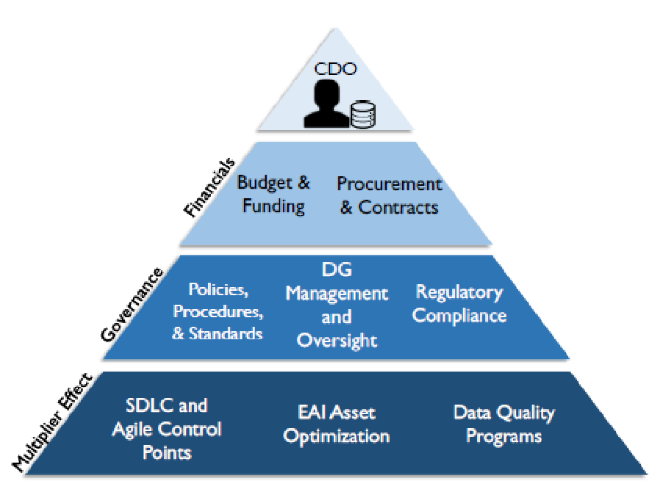Data Governance: Function and Activities

1. Define Data Governance for the Organization (Planning)
-
Perform Readiness Assessment:
- Assess data management maturity.
- Evaluate capacity to change.
- Measure collaboration readiness.
- Ensure business alignment.
-
Perform Discovery and Business Alignment:
- Discovery:
- Identify and assess the effectiveness of existing policies and guidelines.
- Identify opportunities for Data Governance to improve data usefulness and content.
- Business Alignment:
- Attach business benefits to Data Governance program elements.
- Discovery:
-
Develop Organizational Touchpoints:
- Support alignment and cohesiveness in data governance and management areas outside the direct authority of the Chief Data Officer.
2. Develop the Data Governance Strategy (Planning)
-
Define the Data Governance Operating Framework:
- Consider factors such as the value of data, business models, cultural factors, and regulatory impacts.
-
Develop Goals, Principles, and Policies:
- Establish goals, principles, and policies for Data Governance.
-
Underwrite Data Management Projects:
- Data Governance Council (DGC) defines the business case and oversees project status and progress on data management improvement projects.
-
Engage Change Management:
- Address organization resistance to the Data Governance program.
- Create a team for planning, training, influencing system development, policy implementation, communication, and implementing new metrics and KPIs.
-
Engage in Issue Management:
- Identify, quantify, prioritize, and resolve data governance-related issues such as authority, change management escalation, compliance, conflicts, conformance, contracts, data security, and data quality.
-
Assess Regulatory Compliance Requirements:
- Evaluate compliance with both government and industry regulations (e.g., Basel II, Peraturan Bank Indonesia, UU ITE).
3. Implement Data Governance (Operational)
-
Sponsor Data Standards and Procedures:
- Define standards for enterprise data models, tool standards, system naming conventions, and other data management procedures.
-
Develop a Business Glossary:
- Provide clear definitions of data terms, including definitions, synonyms, metrics, lineage, business rules, and the steward responsible for each term.
-
Coordinate with Architecture Groups:
- The DGC sponsors and approves data architecture artifacts and may interact with an Enterprise Data Architecture Steering Committee or Architecture Review Board (ARB).
-
Sponsor Data Asset Valuation:
- Ensure proper valuation of data assets.
4. Embed Data Governance (Continuous/Operational)
- Ensure Sustainability:
- Ensure that the organization accepts and manages data governance.
- Monitor and measure the function’s results and overcome obstacles that could cause the Data Governance program to falter or fail.